READY TO GET STARTED?
REQUEST A FREE ESTIMATE
Fill out the form below or call (888) 466-7849 for a free, no-obligation estimate.
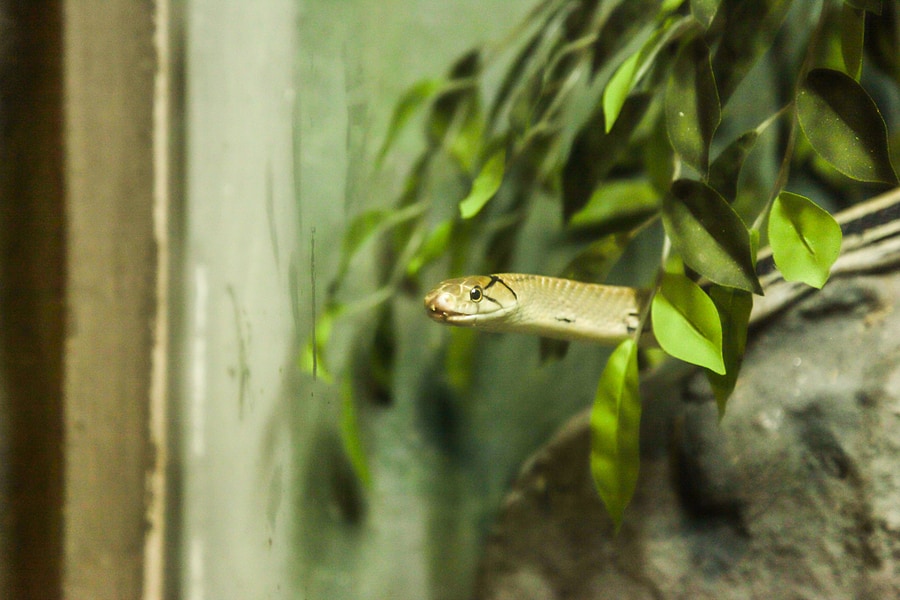
Although many people don’t welcome the sight of a snake in their yard, they are actually quite beneficial to have around. Snakes eat mice, grubs, slugs, and other insects around your home and are also a source of food for birds of prey like hawks. While most species of snakes are non-venomous, there are a few types of snakes that are venomous in our area. For this reason, you should never handle a snake unless you are 100% sure you know what species it is. Most snakes will bite when harassed whether they are venomous or not.
There are many natural snake repellent methods out there today with one of the most common being mothballs. But are they really effective? According to experts at the Blue Ridge Poison Center the answer is a resounding NO. Mothballs are made of either naphthalene or paradicholorbenzene. Both of these chemicals are hazardous to both humans and animals if exposed to or ingested. The chemical makeup of each of these substances allow them to turn into gas when they are exposed to the air – resulting in the strong smell we usually associate with mothballs. These fumes can cause dizziness and irritation to the eyes and the lungs. If ingested, mothballs can cause a condition called hemolytic anemia which is very dangerous. Mothballs also resemble candy to young children, making them more likely to pick them up and handle or eat them.
So if mothballs aren’t the answer, how can you get rid of snakes? Here are a few snake prevention tips you can use safely around your home.
If you have a problem with snakes or other wildlife, contact your local pest control company who can help identify pest attractants, points of entry, and provide you with safe and humane snake removal services.
Fleas & Ticks: What’s the Difference?
Bed Bugs: Where Do They Come From?
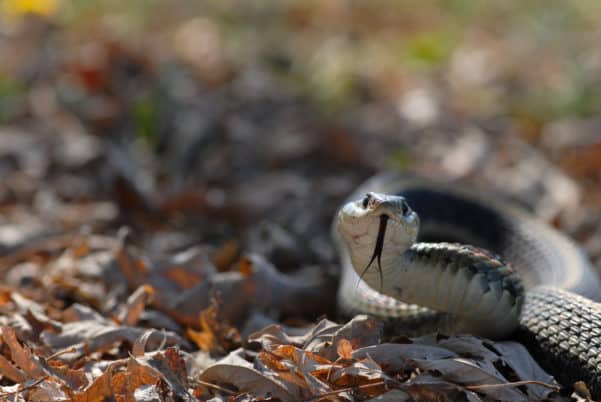
As the weather continues to warm up, snakes start to become more active and on the move in search of food. Most homeowners can agree that they fear finding snakes in the yard. But while most of us don’t want snakes hanging out on our property, it’s important to note that these wildlife creatures are beneficial to have around as they can get rid of other pests infesting your property. Instead of eliminating these creatures, every homeowner can take simple preventative measures to encourage them to find a different location to habitat.
Ensuring that your yard is well-kept up is one of the easiest and simple ways to deter snakes from your property. Debris and leaf piles are a huge attractant to rodents which will then attract snakes. The leaf piles are additionally a great place for snakes to hide out in. Make sure you are cleaning up any debris piles, including sticks, brush, and tree limbs from your yard.
Overgrown trees and shrubs provide cover and shelter for snakes. Make sure that you are trimming your overgrown trees and shrubs, so they are not touching the house or garage. Don’t forget to trim the branches off the ground so there is at least 24” to 36” space underneath. This helps eliminate a place for snakes to take cover, but also makes them easier to spot.
You might not be aware, but certain items are placed in your yard that could be attracting snakes. While many love to have decorative birdhouses and bird feeders in the yard, they can attract snakes. Some snakes are great climbers and will climb up to feast on the birds feeding on the feeders or living in the birdhouse. Consider placing the birdhouse or feeder on a metal pole or wood post, with the post wrapped in metal sheeting.
A perch pole is a great alternative to help keep snakes away from the property. Owls or hawks are natural predators to snakes and will use the installed perch pole. Make sure that the pole is in an open area in your yard, so the birds can have a good view of the entire area.
Though, sometimes it’s just best to install fencing to help keep snakes out. If you decide to install fencing, make sure that it’s buried a few inches into the ground and should be made up of ¼” or smaller rigid mesh. At the top of the fence, make sure that it bends to keep snakes from climbing over it.
If you’ve tried all the prevention tips you can to deter snakes away from your yard but it’s not working, it might be time to call your local wildlife control company. These professionals can help establish a regularly scheduled service and treatment plan to help with your snake problem.
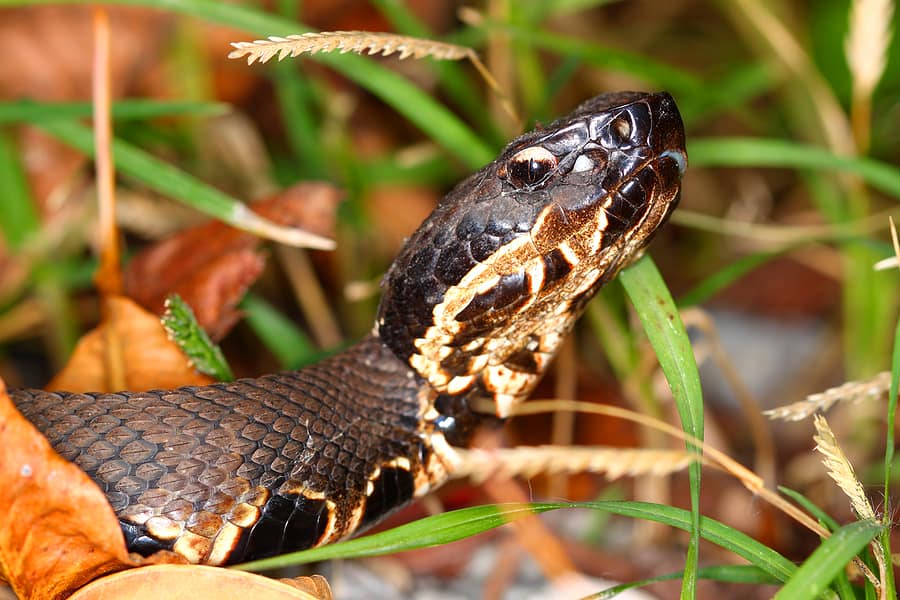
As the weather heats up, snakes will be on the move, emerging from hibernation in search of food. Snake season peaks in the summertime, making your chances of an encounter with these reptiles increase. Here are 7 common snakes you may encounter this summer, along with snake prevention tips to help you avoid these pests while outdoors.
Eastern kingsnakes are large snakes, usually 3-4 feet long, shiny black in color with white or yellow bands. They have a short, blunt snout, rectangular looking head, and small beady eyes. They’re usually found in protected areas such as woods, overgrown vegetation, cluttered areas, etc. and most active during summer months in the morning hours. If you encounter a kingsnake, use caution; they are non-venomous but strong constrictors and may bite if handled. Keep eastern kingsnakes away from your home by limiting their food sources – other snakes, lizards, rodents, and birds, removing clutter and debris, storing wood away from your home’s exterior, use a snake repellent product, or contact a pest control company specializing in snake control.
Rat snakes are large, 3-6+ feet long, and black and yellow with stripes, or gray with darker patches. You can expect to find them in wooded areas, overgrown vegetation, swamps, abandoned or vacant buildings. Though they’re non-venomous, they may bite if handled or threatened and will climb for food. Prevent rat snakes around your home by reducing potential food sources – rats, mice, squirrels, birds, and bird eggs – using a snake repellent product, or professional snake control by a pest or wildlife removal company.
Garter snakes are small, usually 1/5-4 feet long, with three yellow stripes running vertically down a dark colored body. They’re active during day or night hours and often found in suburban areas under debris or boards – anywhere that provides cover for them – and around water, grassy areas, woods, and marshes. Garter snakes are common throughout the Southeast and most of the U.S. Like other non-venomous snakes, they pose no real threat unless bothered. Keep garter snakes away from you home by limiting preferred food sources – worms, slugs, frogs, toads, salamanders, fish and tadpoles – removing items that can be used as cover (wood, debris, etc.), and using a snake repellent product.
Black racers are large snakes, 5 feet long or larger, with slender black bodies and sometimes a white chin. Juvenile black racers are grayish in color with darker blotches. Black racers are common through the eastern U.S. and most often seen near forest edges, fields, or wetland outskirts during the day in warmer months. They’re non-venomous and usually timid, fleeing when threatened. To keep them away from your home, reduce food sources – insects, lizards, snakes, birds, rodents, and amphibians – and apply snake repellent products.
Brown snakes are small, 6-13 inches long, and usually brown but may be yellowish, reddish, or grayish-brown with darker spots on the back. You’ll find them in residential areas, wooded areas, near wetlands, and in urban areas under wood, leaves, and debris, or any other area with adequate ground cover. Brown snakes are the most common snake found in urban areas. They’re most active during evening or night hours, occasionally seen crossing roads. Brown snakes are non-venomous and pose no serious threat although may bite if threatened. While they’re not dangerous, you may not want to find one hiding out around your home. Prevent this by removing clutter and debris from your yard and consider using a product that brown snakes find repellent.
Copperheads are large snakes, usually 2-4 feet long, with a heavy body and a triangular shaped head. They are tan to brown in color with hourglass shaped darker bands running across the body; juvenile copperheads have a distinct yellow tail tip. You may encounter a copperhead snake in suburban areas or in semi-protected areas like woods or swamps. They’re common throughout central and eastern U.S. with the exception of some areas in south Georgia and all of Florida. Copperheads are venomous and dangerous and may bite if threatened. Use caution when outside in the summer, especially at night. Deter copperhead snakes from hanging out around your house by reducing potential food sources – mice, small birds, lizards, small snakes, amphibians and insects. If you see a copperhead, contact a wildlife control company to safely remove it.
Cottonmouths, also called water moccasins, are large snakes – 2-4 feet in length – with a very heavy body and a distinctly triangular head. Their color varies from solid brown or brown or yellow with dark crossbands with a white mouse (inside); juveniles have a yellow tail tip. When threatened, cottonmouths display with the head in the middle of their coiled body and mouth wide open. As the name “water moccasin” suggests, cottonmouth snakes prefer to inhabit freshwater, swamps, river floodplains, and heavily vegetated wetlands. While they’re most common throughout coastal regions, cottonmouths are prevalent across the southeast U.S. They are active day and night but more likely to be seen when foraging for food at night in warmer months. Avoid cottonmouths if you come in contact with one, they are venomous and may bite if threatened. Use caution around fresh water habitats in the summer.
Your Guide To Summer Pest Control
Watch Out for These Stinging Pests
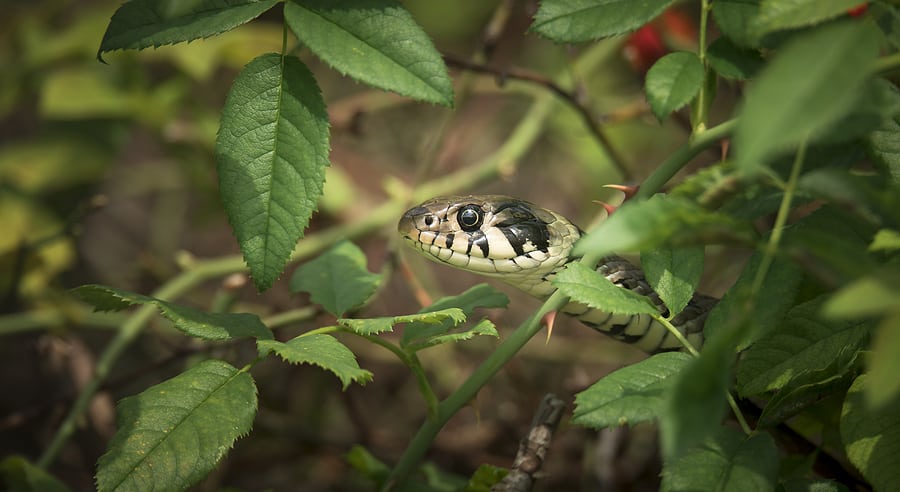
Snake season in Georgia starts in spring and runs through late fall. As the temperatures start to warm up, snake activity in our area will increase. As snakes emerge from hibernation, they will go in search of one thing: FOOD! This quest will often lead them into our backyards, gardens, and even local parks. With snake season just around the corner, now is the time to take action. Here are some snake prevention tips to help you prepare for snake season.
Snakes will use anything they can find for cover. Take the time now to clean up leaf litter, fallen logs, piles of bricks and rocks or anything else snakes can use as a hiding spot. If you can’t remove them, try to elevate them off the ground. Keep your lawn and any other surrounding areas with grass mowed short. Snakes will use tall grass as cover. Low hanging growth from trees, shrubs, hedges, etc. provide natural places for snakes to climb and hide. Keep them trimmed back from your home and off the ground. Discard any mulch or grass clippings away from your property as snakes will burrow into these for a sheltered hiding space.
Snakes will use holes in the exterior of your home to gain access inside. Carefully inspect the outside of your house for holes, making sure to check under roofs, under the house, in skirting, on garages, etc. Repair or block any openings that you find.
Snakes will often go after hatchlings and bird eggs. If you have chickens, ducks or any other birds, make sure their pens or aviaries are kept tidy and in good repair.
Snakes will feed on rodents, frogs, and other insects. Keeping these pests away from your home will help keep snakes away, as well. Clean up spilled or uneaten birdseed from underneath feeders; keep outdoor trashcans sealed with tight lids; feed your pets indoors when possible; if you must feed outdoors, feed once or twice per day and bring food and water bowls indoors in between feedings; seal pet food and bird seed in plastic or metal containers with tight lids.
Moisture also attracts rodents, frogs, and other insects that snakes feed on. Eliminating moisture will help make your property less attractive to snakes. Eliminate any areas of standing water; fix leaky pipes and spigots; try to avoid overwatering your lawn; consider enclosing your crawlspace.
Establishing a routine pest control service helps prevent nuisance pest problems before they get out of hand. By keeping these pest populations under control, you decrease the risk of snakes by eliminating potential food sources.
Most snakes that are encountered are non-venomous; there are some venomous snakes in our area that you should be careful to avoid, however. If you must be outdoors during snake season, wear long pants, long sleeves, gloves, and closed toed shoes. If you go outside at night, take a flashlight, lantern, or torch. If you do encounter a snake, don’t go near it and don’t try to kill it. Stay calm, keep your pets and children away, and allow the snake to move away on its own. Back away slowly. If you choose to, contact your local wildlife control company who can come and properly identify the snake and safely relocate or eliminate it.
4 Reasons For A Yellow Lawn and How To Fix It
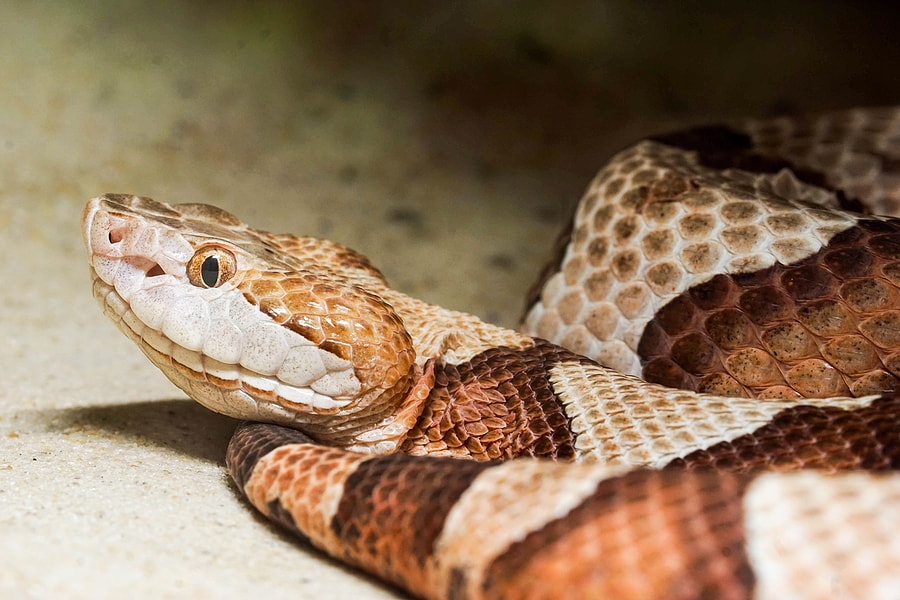
The last thing anyone wants to encounter when spending time outdoors is a snake. In Georgia, there are 46 native species of snakes and only 6 of those are venomous (the copperhead, pigmy rattlesnake, timber rattlesnake, cottonmouth, eastern diamondback rattlesnake, and eastern coral snake). Although they can be quite scary when stumbled upon, they are actually quite beneficial to have around. Snakes are top predators, eating rats, mice, and other small mammals. Some even eat other venomous snakes! There are only an average of 8000 snakebites nationwide each year.
Snakes are most commonly found in backyards, parks, and woodlands. Many species will spend most of their time underground, only coming out to hunt and feed. Larger snakes will often shelter in brush piles or stacks of firewood. Water snakes are usually found in areas that border streams, lakes, swamps, and ponds.
Snake season officially begins in the spring, usually around March or April, and runs through late fall and winter. The end of snake season depends on weather patterns and geographic locations. In southern states with warmer climates, snakes will remain active longer than in northern states when it gets colder sooner.
Because snakes are coldblooded, they are less active in cooler months. Where do snakes go in the winter? Many snakes will go into a state of brumation, which is similar to hibernation but doesn’t require the same amount of sleep. In brumation, snakes will wake to forage for food and water, especially during warm snaps when temperatures increase periodically. Because they use less energy, they can go longer between feedings.
If you encounter a snake, whether outdoors or inside your home, there are a few tips you should keep in mind:
Although snake bites are rare, it’s best to leave handling and removal of snakes to the professionals. If you encounter a snake in or near your property, contact a wildlife control company who can safely and quickly remove the offending snake.
Kudzu Bugs vs. Brown Marmorated Stink Bug: What’s the Difference?
How To Get Rid of Millipedes Naturally
What’s Attracting These Roaches?!